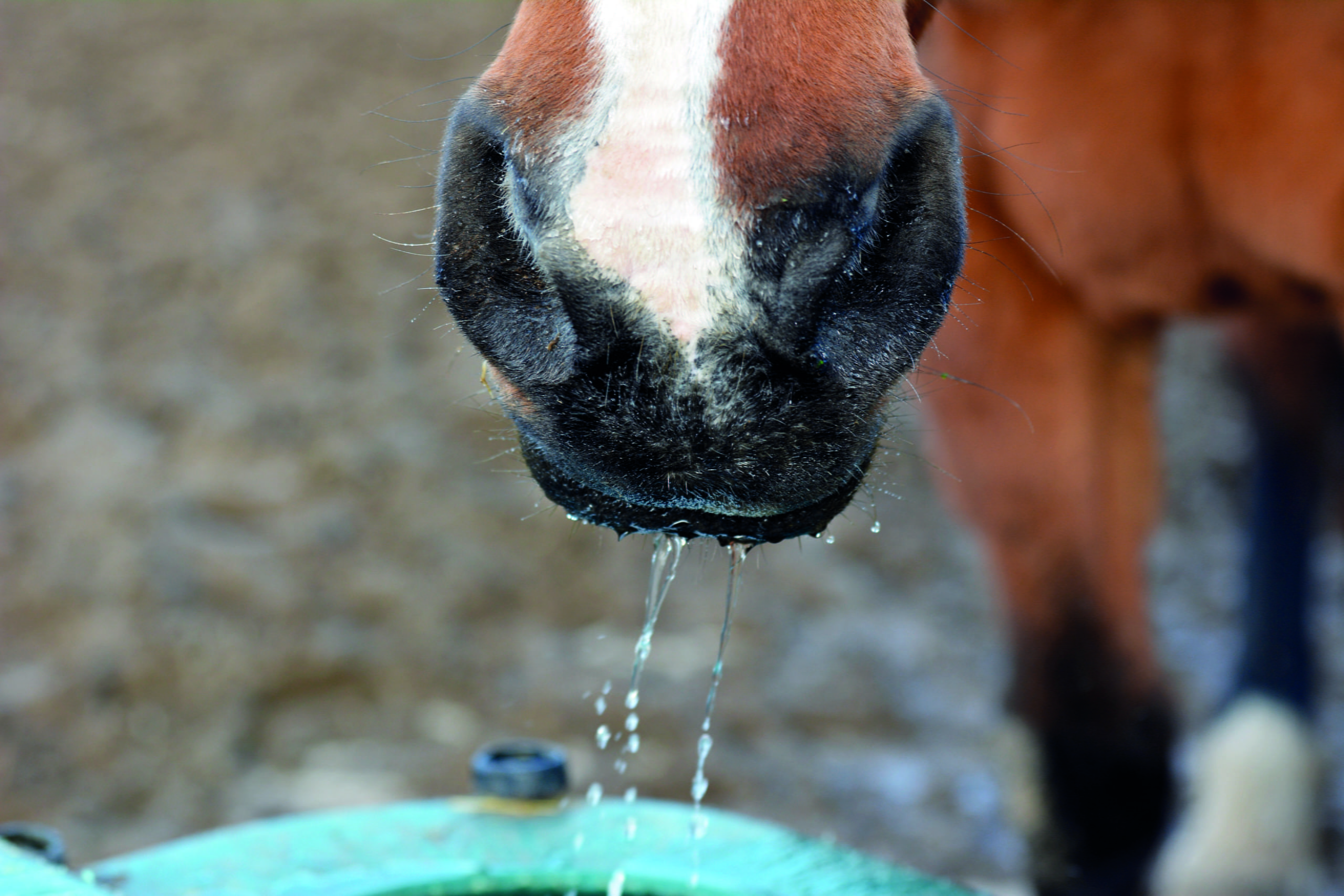Your horse, like many other species, needs sufficient water intake on a daily basis to keep him hydrated and to aid in digestion, regardless of whether he is a top competition horse or a happy hack. Over the winter period, a horse’s water intake becomes far less, as he does not need to replenish fluids lost to sweat as he does in summer. However, many horse owners up their horses’ food during the winter period to prevent weight loss, and consequently they need more water to help the digestive system process the feed.
Vital signs
In winter, the average horse will drink 25ℓ of water per day in temperatures of between -5°C and 10°C, but this intake can increase in warmer winter weather or strenuous work. Keeping tabs on your horse’s vital signs will help raise any red flags. A sick horse will likely suffer from a lack of appetite and will also not want to drink, putting him at risk of dehydration. A horse’s vital signs should be checked on a daily basis:
Temperature: 37.2-38.3°C
Pulse: 28-44 beats per minute
Respiration: 10-24 breaths per minute
Phone a vet to come and assess your horse at the first sign of an increased or decreased vital sign.
Signs of dehydration
Dehydration is a serious threat to your horse’s wellbeing, as this loss of water also means the loss of essential minerals such as sodium, chloride and potassium. In serious cases, if the horse is not quickly rehydrated, it could lead to kidney failure.
A horse’s skin loses its elasticity when body fluid or electrolyte levels are depleted. The easiest way to assess dehydration is to pinch the skin along the horse’s back or on the neck in front of the shoulder. If the skin stays up and slowly returns to place, then the horse is dehydrated. Healthy skin will spring back into place quickly. Other signs of dehydration include:
- Lethargy
- Dull eyes
- Dry skin and mouth
- Pale gums
- Thick saliva
- Increased pulse
You can lead a horse to water 
Importantly, fresh and clean water must always be provided in the stable and paddock. The water bucket or trough should be cleaned and maintained, as a horse will not want to drink from dirty or contaminated water.
Monitor your horse’s water intake by assessing the levels of water left in his bucket in the morning. If your horse is turned out individually during the day, you will be able to see how much water he’s had to drink during his paddock time; however, it’s much harder to measure how much water an individual horse has drunk if he’s turned out in a herd. If your horse is turned out with others, be cautious of a dominant horse in a herd denying other horses the chance to share the water.
But you can’t make him drink
As much as you may offer clean, palatable water, your horse may not want to drink due to the cold weather. You may need to consider alternative options to encourage thirstiness in your horse.
Adding salt to your horse’s feed or providing a salt block in your horse’s stable can promote thirstiness, thereby encouraging the horse to drink more. You can also consider wetting or soaking your hay, as the horse will ingest more moisture this way. If the type of your horse’s concentrates requires you to dampen the feed, you can add a little more water than usual so that the consistency is wetter.
Extra tips
- Always offer your horse water after travelling and at a show. If the horse is travelling long distances, stop every three hours to offer him water.
- Offer your horse water immediately after strenuous exercise.
- Make sure that water buckets or containers can’t be knocked over in the stable or paddock.
- Ensure that water containers are cleaned and refilled on a daily basis.
The full article appears in the The Winter Guide issue of HQ (July 124)

